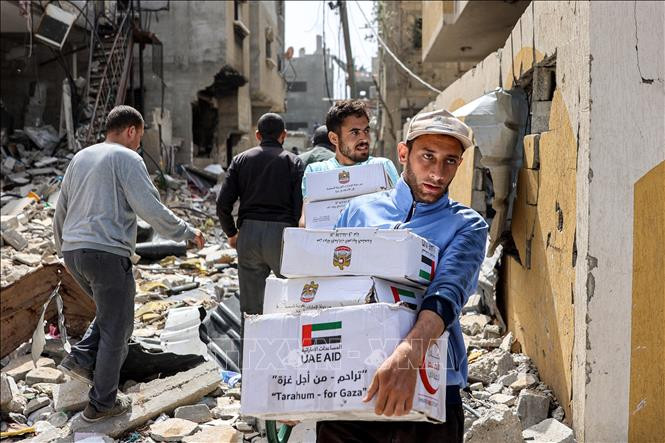On May 1, the Gaza Strip's Media Office announced that the number of trucks carrying aid into the strip in April had "slightly increased", reaching 164 trucks/day.

The announcement said that a total of 4,887 trucks carrying goods entered Gaza in April, including 1,166 trucks passing through the Rafah border crossing with Egypt, the rest through the Kerem Abu border crossing with Israel. Of these, only 419 trucks (8%) reached northern Gaza, where the humanitarian crisis is acute with some 700,000 people in urgent need of aid.
Previously, Israel pledged to the US to send 300-500 trucks carrying aid into Gaza every day, while about 1,000 trucks are needed to meet the needs of the people.
In a related development, the same day, the Pentagon announced that the temporary pier built by the US military to increase the delivery of humanitarian aid to Gaza was more than 50% complete. Speaking to reporters, Pentagon Deputy Press Secretary Sabrina Singh announced: "As of today, we are more than 50% complete in establishing the pier."
The groundbreaking for the pier was announced on April 25, and US officials said it would be operational by early May. The plan to build the aid pier, which is expected to cost at least $320 million, was first announced by US President Joe Biden in early March, when Israel stopped sending aid by land.
In another development, the Japan International Cooperation Agency (JICA) has provided 3,780 food packages as emergency humanitarian aid to improve the nutritional situation of people in the humanitarian crisis in the Gaza Strip. The food packages were transported to Gaza on April 30 through the Rafah border crossing with the support of the Egyptian Red Crescent Society (ERC). This is the third batch of emergency food aid provided by Japan to people in Gaza. JICA said each food package can feed a family of five for a week.
After more than six months of conflict between Hamas and Israel, the humanitarian situation in Gaza is dire. A senior US official said the entire population of 2.2 million people in the territory is facing food insecurity.
According to the Gaza Information Service, the estimated damage has reached nearly $33 billion, and has left 90% of the population living below the poverty line. Israeli attacks have destroyed the infrastructure of 15 economic sectors in Gaza, including health, education, construction, housing, municipal services, administration, industry and trade, electricity, and transportation. Unemployment has risen to 75%, up nearly 30% from before the conflict.